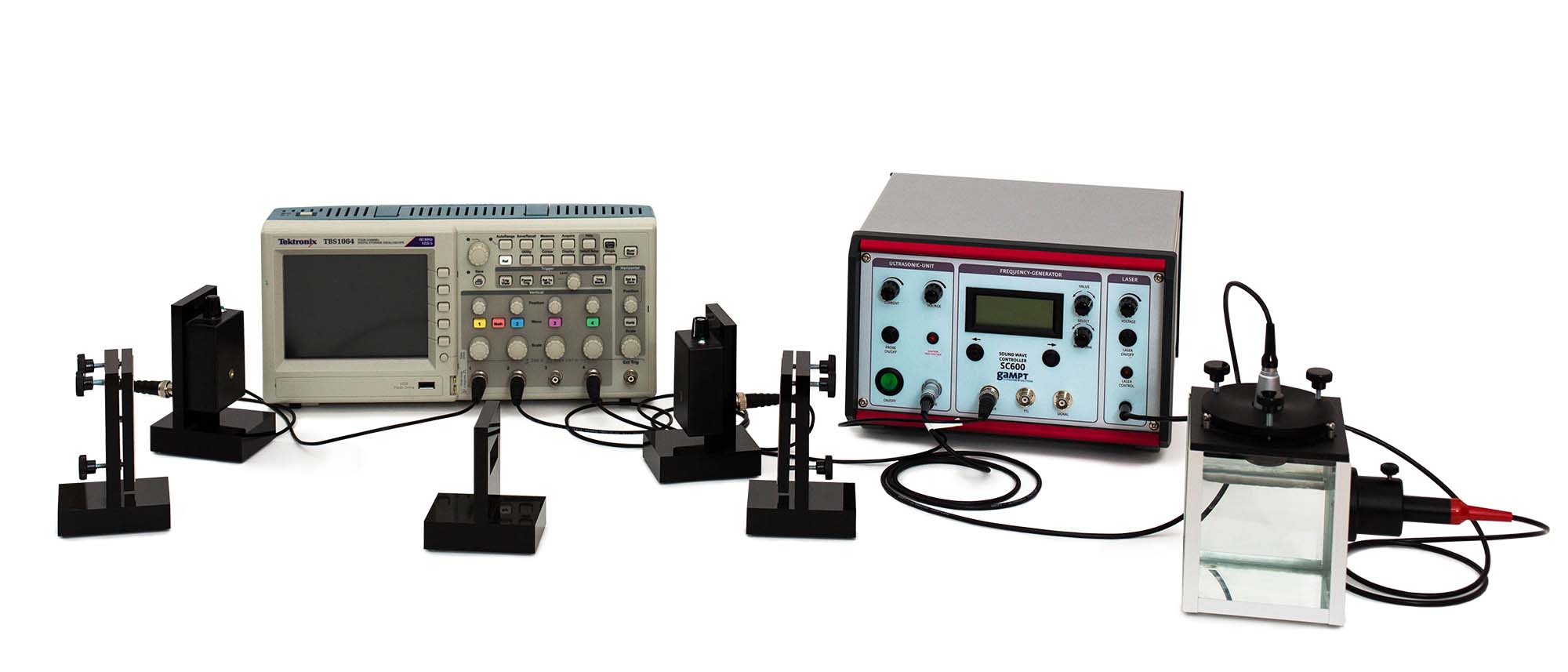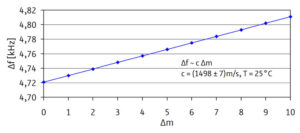Article No. VK-PHY17
PHY17 Acousto-Optical Modulation at Standing Waves
Investigation of the acousto-optical effect of the amplitude and phase modulation of light diffracted at a standing ultrasonic wave
- Subject matter of the experiment
- Theoretical and practical aspects of the experiment
- Results
- Equipment
- Related Experiments
The acousto-optical effect of the amplitude and phase modulation of light diffracted at a standing ultrasonic wave is investigated. The effect is used to determine sound velocity in water.
Keywords: Acousto-optical effect, standing ultrasonic wave, sound wavelength, diffraction, optical grating, grating constant, amplitude modulation, phase shift
Commensurate with the Debye-Sears effect (PHY11), light is diffracted at a standing or travelling ultrasonic wave in a liquid or a solid body. The diffraction maxima produced with the diffraction at a standing ultrasonic wave are amplitude-modulated, although a phase shift of 180° occurs between the maximum of 0th and a maximum of nth order. This effect is used in acousto-optical modulators (AOMs). Using photodiodes and an oscilloscope, amplitude modulation and phase shift can be demonstrated.
A change in the sound frequency influences the modulation amplitude. The modulation amplitude is always biggest when the distance h between ultrasonic transducer and sound reflector corresponds to a multiple m of half of the sound wavelength. This makes it possible to determine the sound velocity c in the medium according to c = 2 h Δf / Δm (Δf: frequency difference between maximum modulation amplitudes).
To determine the sound velocity in water, the 0th order of diffraction is aligned to a photodiode and a first maximum amplitude is searched for. Afterwards, the sound frequency is gradually increased and the frequencies of the following maximum amplitudes are determined. For the measuring points entered in the diagram, there arises a sound velocity in water of (1498 ± 7) m/s (T = 25 °C). The laser beam is splited with a beam splitter to determine the phase shift. The second partial beam is aligned to a second photodiode so that another diffraction maximum can be obtained with it. At the oscilloscope, the phase shift between the two different orders of diffraction can be determined.
| Ord.no. | Description |
|---|---|
| 20100 | cw generator SC600 |
| 20200 | Debye-Sears set |
| 20301 | Beam splitter |
| 20302 | 2 adjustable reflectors |
| 20303 | 2 photodiode receivers |
| – | Oscilloscope (not included in delivery but used for the experiment) |

